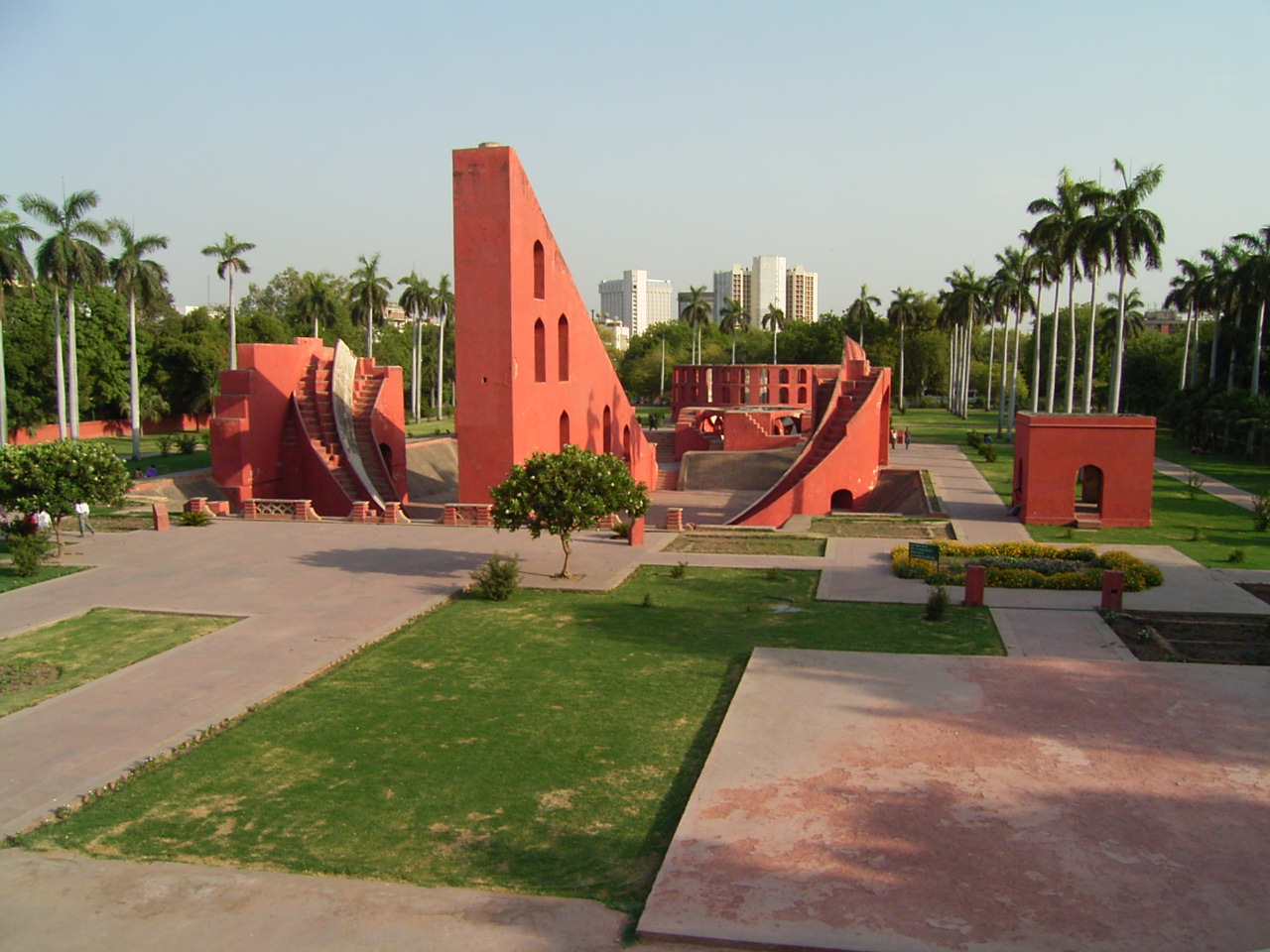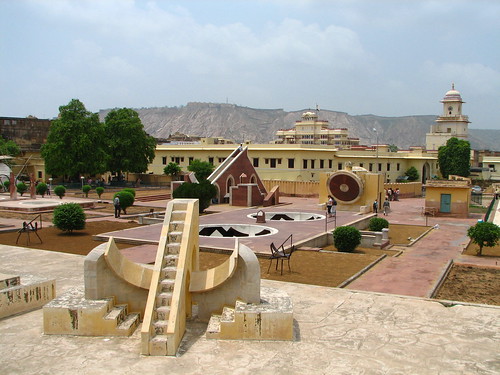
Jantar Mantar is one of the top attractions of Delhi. It draws a stream of visitors all round the year. With hotels of Delhi you can have the glimpse of the astronomical advancement India had made in ancient period.The famous 18th century astronomer king and the founder of the Pink city of Jaipur, Sawai Jai Singh, built the first of his five astronomical observatories across India.
The observatories are known as Jantar Mantar which derives it name from the corruptions of the words 'yantra' (instrument) 'mantra' (formula) over the period.

The Jantar Mantar at Delhi is located on Sansad Marg between Connaught Place and Rashtrapati Bhavan. It is the largest and the best preserved compared to the other four open-air observatories which were built by Sawai jai Singh in Varanasi, Jaipur, Mathura and Ujjain.
Vast red and white sloping stone structures hover over palm trees and neat flower beds - The giant sundials are vast red and white sloping stone structures hover over palm trees and neat flower beds. They cast the shadows, which were formerly used to calculate time, lunar and solar calendars, time as wells astrological movements, all with an incredible degree of accuracy.These are few of the visitable places in DELHI- The capital of india.

The observatories are known as Jantar Mantar which derives it name from the corruptions of the words 'yantra' (instrument) 'mantra' (formula) over the period.

Vast red and white sloping stone structures hover over palm trees and neat flower beds - The giant sundials are vast red and white sloping stone structures hover over palm trees and neat flower beds. They cast the shadows, which were formerly used to calculate time, lunar and solar calendars, time as wells astrological movements, all with an incredible degree of accuracy.These are few of the visitable places in DELHI- The capital of india.

Maharaja Sawai Jai Singh II, who built the observatories in northern India, was born at AMBER (Near Jaipur) in 1686 AD. He was the eldest son of his father Maharaja Vishnu Singh. He became King of Amber in 1699 A.D. after the death of his father. He saw the rule of five Mughal emperors during his regime (1699-1743). In 1707 AD, he won the areas of Amber, Sambhar & Ajmer from Mughal forces under Emperor Bahadur Shah I. He was granted governorship of Agra and Malwa provinces by emperor Muhammad Shah in 1719 A.D.
Maharaja not only proved himself as daring commander and able administrator but also excelled in subjects like astronomy, mathematics, science and town planning. He founded his new capital JAIPUR in 1727 AD. Mughal Emperor Aurangzeb was impressed by his courage & wits and awarded him with the title 'Sawai' (meaning twenty five percent or a quarter more able, courageous, intelligent etc. than his contemporaries). Sawai Jai Singh studied Hindu, Muslim, and European systems of observation and calculations relating to astronomy. For establishing astronomical observatories, he sent intellectuals to European countries and invited European scholars to India. He invented brass instruments for calculating astronomical values and later replaced them with instruments made of brick, lime and clay. On the orders of Muhammad Shah, Sawai Jai Singh II completed Delhi observatory in 1724 AD. Jaipur observatory was built ten years later. Within next 15 years, three more observatories were built by him at Ujjain, Varanasi and Mathura. The last one no longer exists now as it was destroyed by a government contractor Jyoti Prasad little before 1857 AD who bought it for want of materials.
Jantar Mantar literally means 'Yantra Mantra', that is calculations with the help of instruments.
Jantar Mantar was built in the outskrits of Shahjahanabad in 1724 A D after seven years of observations and recordings of data using various models. Maharaja Sawai Jai Singh II earlier used brass instruments but later built huge masonry instruments as he found brass instruments unsatisfactory.
Delhi observatory or Jantar Mantar was constructed on an experimental basis.
Astronomical calculations obtained with the help of this observatory were termed as ' Zij Muhammad Shahi1.
Maharaja Sawai Jai Singh II himself invented instruments like Samrat Yantra, Jai Prakash Yantra and Ram Yantra. Misra Yantra was probably added later by his son Sawai Madho Singh.
In 1795 AD, Franklin visited this observatory and commented "Jats under the leadership of Jaswant Singh had destoryed the observatory


Jantar Mantar literally means 'Yantra Mantra', that is calculations with the help of instruments.
Jantar Mantar was built in the outskrits of Shahjahanabad in 1724 A D after seven years of observations and recordings of data using various models. Maharaja Sawai Jai Singh II earlier used brass instruments but later built huge masonry instruments as he found brass instruments unsatisfactory.
Delhi observatory or Jantar Mantar was constructed on an experimental basis.
Astronomical calculations obtained with the help of this observatory were termed as ' Zij Muhammad Shahi1.
Maharaja Sawai Jai Singh II himself invented instruments like Samrat Yantra, Jai Prakash Yantra and Ram Yantra. Misra Yantra was probably added later by his son Sawai Madho Singh.
In 1795 AD, Franklin visited this observatory and commented "Jats under the leadership of Jaswant Singh had destoryed the observatory



